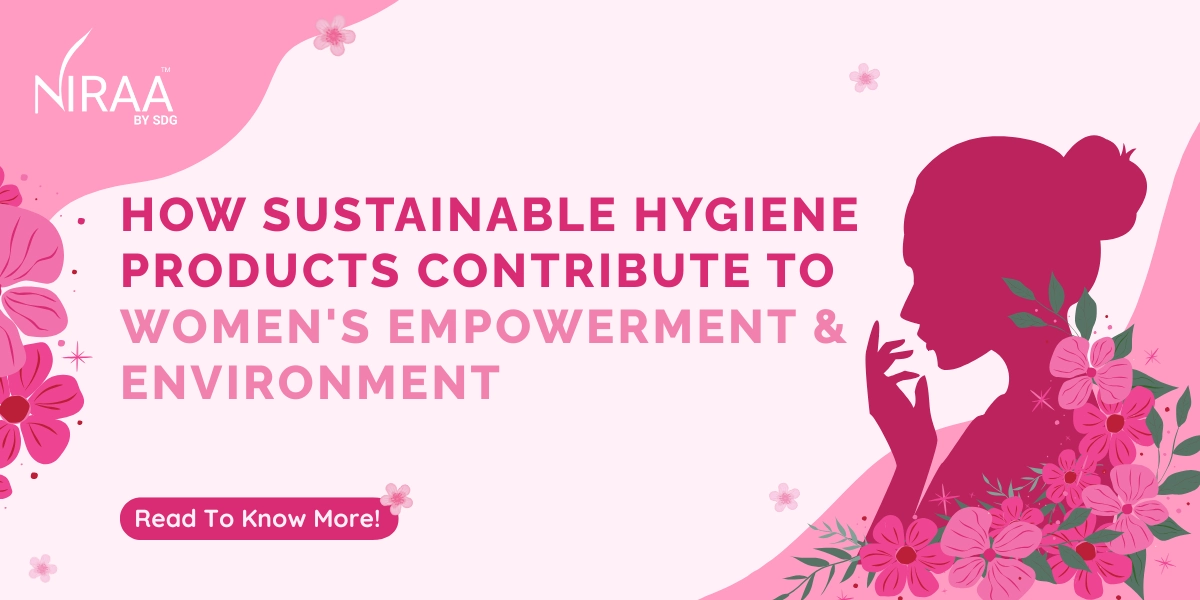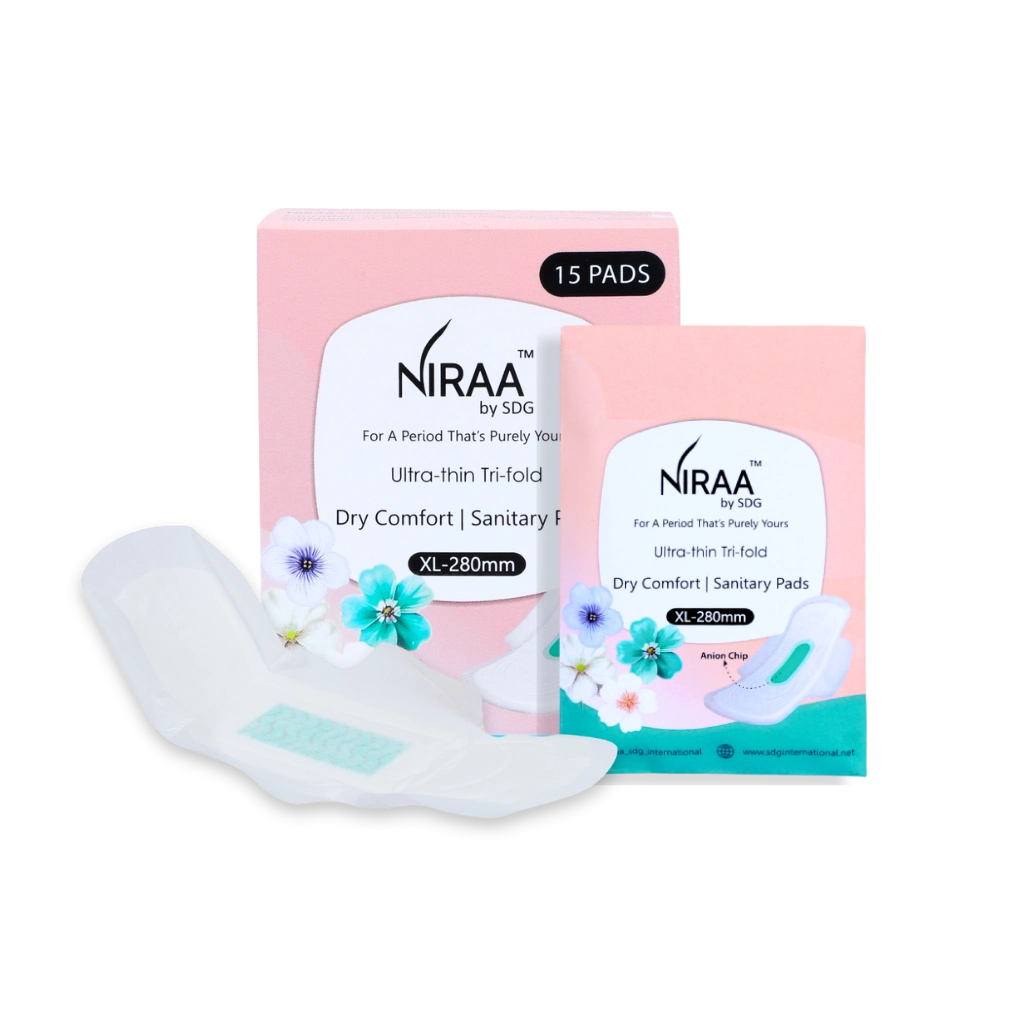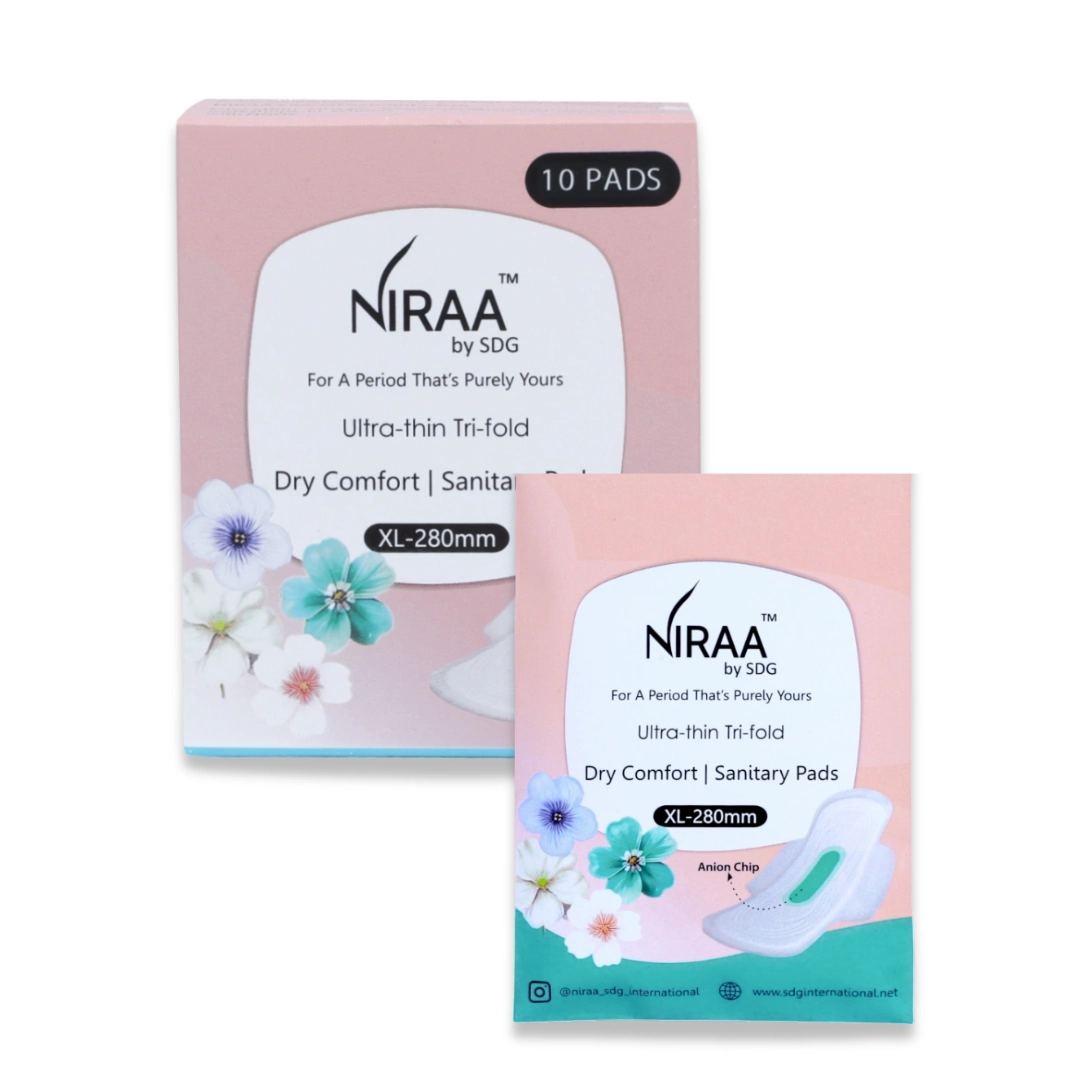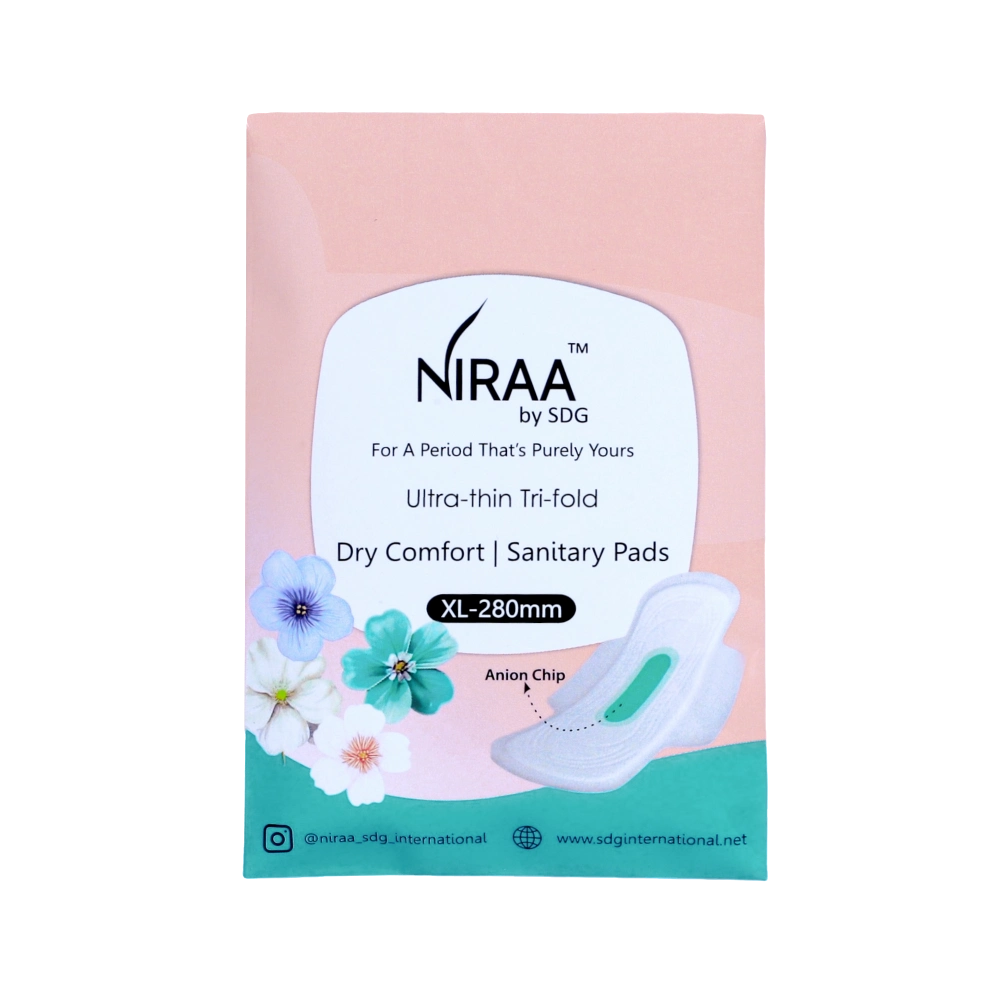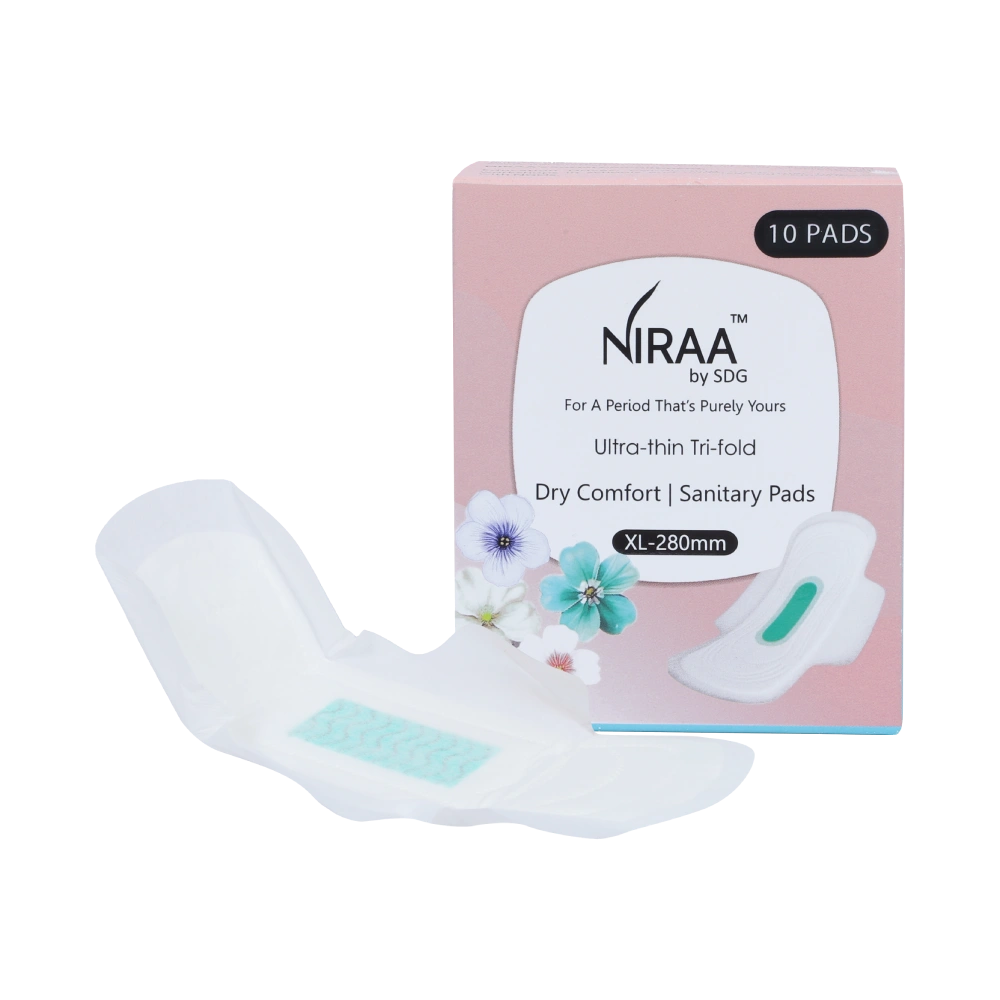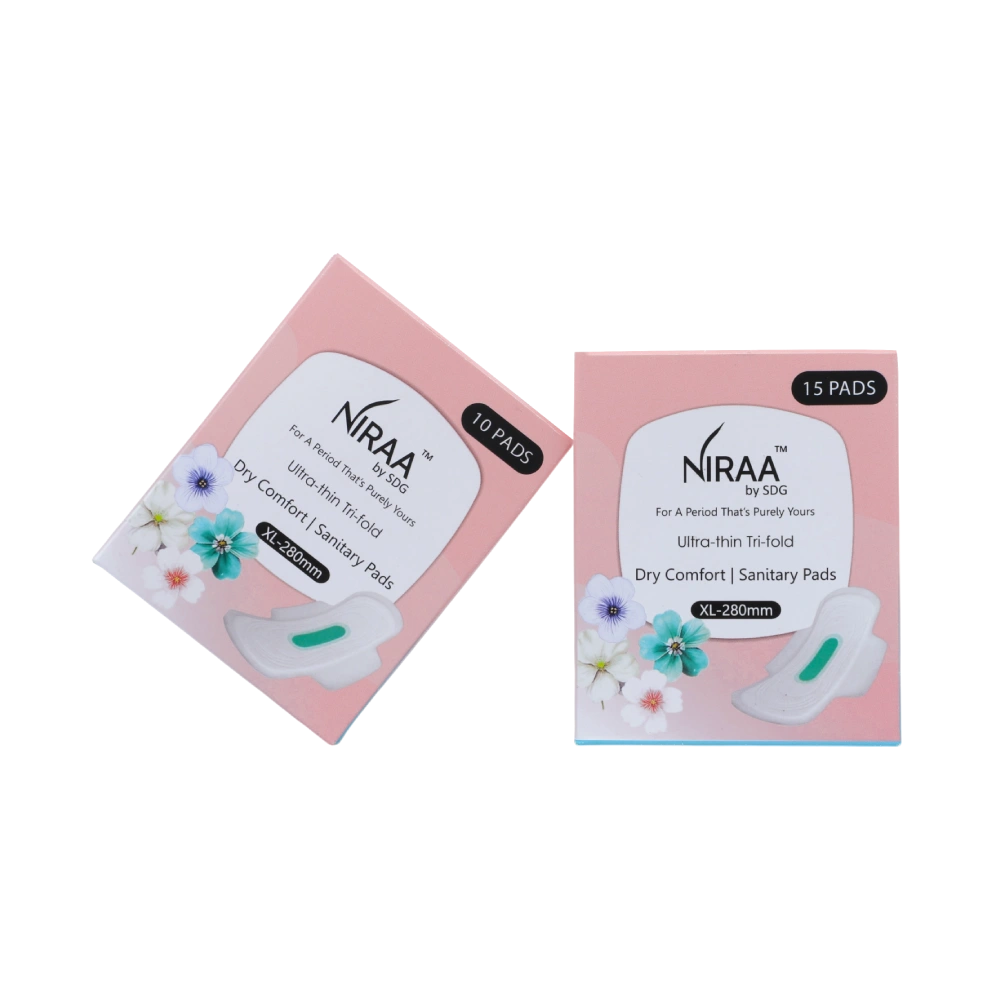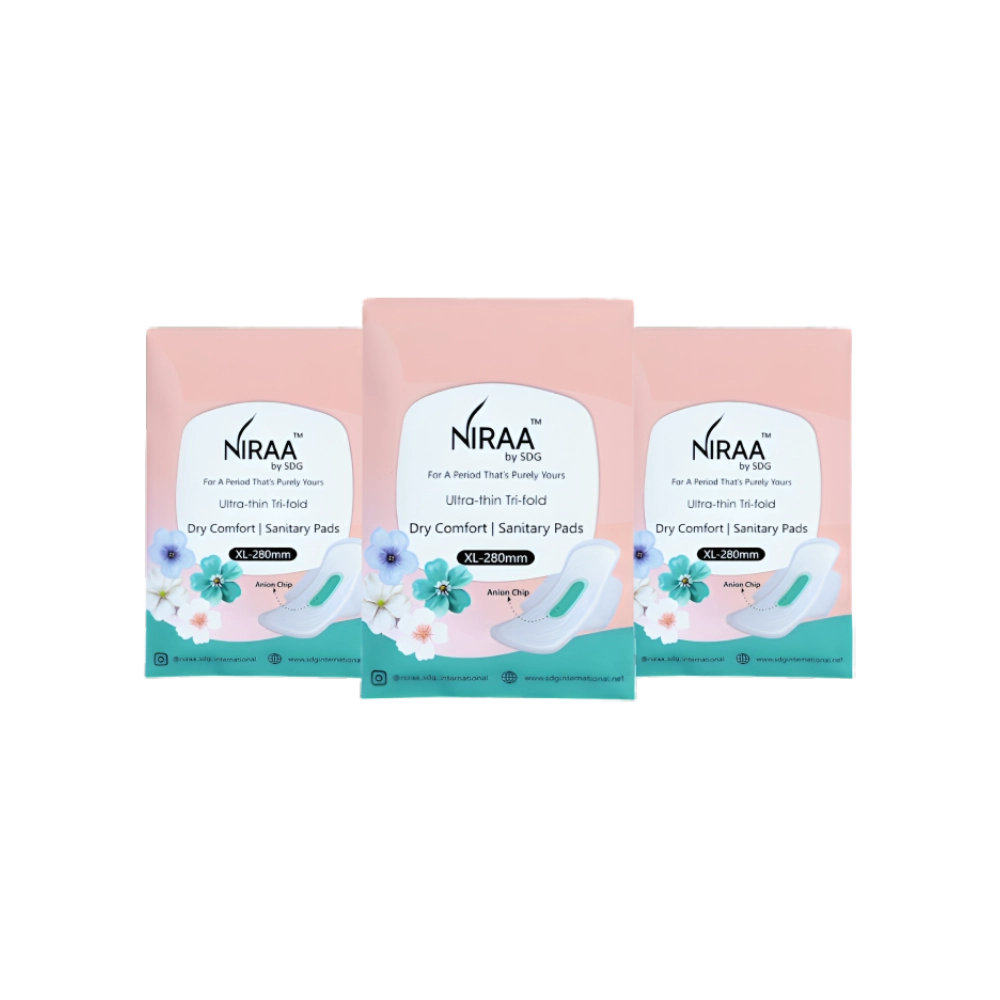Menstrual hygiene is not just about comfort; it is deeply connected to women’s health, dignity, and even the environment. For decades, conventional sanitary pads made with plastic and synthetic materials have dominated the market. While they may provide convenience, they also create long-term problems. A single plastic-based pad can take 500 to 800 years to decompose, adding to the silent crisis of menstrual waste and plastic pollution.
Eco-friendly sanitary pads are a sustainable alternative designed to care for both women and the planet. Made from biodegradable materials like organic cotton, bamboo fibers, or corn starch, these pads are breathable, chemical-free, and safer for women’s health. Unlike plastic-based products, they decompose faster and leave a much smaller impact on soil, water, and ecosystems.
Switching to sustainable sanitary pads is more than a lifestyle choice. It represents a movement that connects women’s empowerment with environmental protection. By choosing biodegradable pads, women can take charge of their menstrual health with dignity and confidence while contributing to a cleaner, greener future where health and sustainability go hand in hand.
The Problem with Conventional Sanitary Pads
Conventional sanitary pads may seem like simple products, but their impact on the planet is far-reaching. Unlike eco-friendly sanitary pads, these plastic-based options do not break down easily and remain in the environment for centuries.
The harmful effects include:
- Overflowing landfills: Pads pile up in garbage dumps, taking up space and creating long-term waste management problems.
- Soil and water contamination: Chemicals from synthetic pads can leach into soil and water systems, disrupting ecosystems and affecting public health.
- Sewage blockages: Many pads are flushed away, leading to clogged drains and polluted rivers or lakes.
- Toxic air emissions: Open burning or poor-quality incineration of pads releases harmful toxins such as dioxins and furans.
- Carbon emissions: From production to packaging and transport, conventional pads leave behind a hidden carbon footprint.
All of this shows that the environmental cost of disposable pads is much greater than it appears. The damage extends from land and water to air quality, making the need for sustainable menstrual products more urgent than ever.
What Makes a Sanitary Pad Sustainable
A truly Sustainable sanitary pads are designed with both women’s health and environmental care in mind. Unlike plastic-based products, they use natural, biodegradable materials that safely return to the earth after disposal.
Key features of sustainable sanitary pads include:
- Biodegradable materials: Made from organic cotton, bamboo fibers, banana fiber, or corn starch that decompose faster than plastic.
- Health-friendly design: Free from harsh chemicals, synthetic fragrances, and bleaching agents, lowering the risk of rashes, irritation, or infections.
- Breathable comfort: Allow better airflow compared to plastic pads, helping improve hygiene and comfort during periods.
- Affordability in the long term: Although they may cost more initially, their durability and effectiveness often make them more cost-effective over time.
- Accessible alternatives: Many brands now focus on making eco-friendly pads affordable for women across different income groups.
In short, sustainable sanitary pads balance three important goals: protecting women’s health, reducing environmental damage, and remaining affordable enough to benefit more communities.
Tackling Period Poverty?
Access to menstrual hygiene products is a major challenge for many women, especially in low-income communities. For many women and girls, managing their periods is more than just a health concern, it is an economic challenge. Period poverty, the lack of access to affordable and safe sanitary products, continues to affect millions worldwide.
- Unsafe alternatives: Many women are forced to rely on cloth, ash, or even paper, which can lead to serious health issues such as infections and loss of dignity.
- Education and work barriers: Girls may miss school during their menstrual cycles because they cannot afford proper pads, while working women may lose days of productivity, widening the economic gap further.
- The role of affordable and sustainable sanitary pads: Providing eco-friendly, cost-effective pads ensures that women can manage menstruation safely, continue education, and maintain work productivity without interruptions.
- Pink tax and accessibility issues: Higher taxes on menstrual products make them less affordable. Subsidies, tax reductions, and support for local manufacturing of biodegradable sanitary pads can ensure fairer access for all women.
- Long-term savings: Sustainable pads are often more durable and require fewer replacements per cycle. Reusable options can last months or years, reducing the recurring financial burden for women, particularly in low-income communities.
- Empowerment through availability: By addressing period poverty, sustainable pads do more than protect the environment—they provide equal opportunities in education, work, and community participation, empowering women to move forward with dignity and confidence.
Women’s Empowerment through Sustainable Sanitary Pads
Sustainable sanitary pads do more than manage periods—they actively contribute to women’s empowerment. By addressing health, confidence, and economic opportunities, these pads help women take control of their lives in multiple ways.
Improved health outcomes:
- Reduces infections, rashes, and discomfort from chemical-laden or non-breathable pads.
- Safer and more comfortable menstrual cycles boost confidence and self-esteem.
Education and workplace participation:
- Girls with access to hygienic, eco-friendly pads are less likely to miss school.
- Working women can maintain attendance without fear or embarrassment.
- Supports academic and professional goals, helping bridge gender gaps.
Women-led entrepreneurship:
- Women lead initiatives to manufacture biodegradable pads, run awareness campaigns, and organize community programs.
- Promotes financial independence, business skills, and influence over menstrual health practices.
Choice, control, and dignity:
- Access to safe and eco-friendly pads empowers women to manage periods confidently.
- Maintains dignity in school, work, and daily life.
Social change:
- Widespread adoption raises community awareness, reduces stigma, and promotes environmental responsibility.
- Women actively participate in health, sustainability, and gender equality initiatives.
Environmental Benefits of Switching to Sustainable Pads
Switching to sustainable sanitary pads has a significant positive impact on the environment. By replacing plastic-based products with biodegradable alternatives, women can actively contribute to a healthier planet.
- Reduction in plastic waste: Using biodegradable pads instead of conventional plastic-based ones significantly reduces plastic waste. This eases pressure on overflowing landfills and prevents long-term soil contamination.
- Lower carbon footprint: Eco-friendly sanitary pads generally require less energy to produce and emit fewer greenhouse gases compared to conventional pads. From manufacturing to packaging and transportation, their entire life cycle is more environmentally sustainable.
- Protection of water systems: Conventional pads often leach chemicals into rivers, lakes, and groundwater. Biodegradable pads help maintain cleaner water systems, protect aquatic life, and promote healthier ecosystems for communities.
- Ecosystem preservation: By reducing waste and chemical pollution, sustainable pads contribute to cleaner soil and air. This supports overall environmental health and ensures that natural habitats remain safer for plants, animals, and humans.
- Long-term community impact: Choosing eco-friendly sanitary pads benefits not only the environment but also the communities who live in it. Reduced pollution and sustainable practices create a safer, healthier setting for future generations.
Challenges in Adopting Sustainable Sanitary Pads
Despite their numerous benefits, eco-friendly sanitary pads face challenges that limit widespread adoption. Understanding these barriers is essential to creating effective solutions.
- Lack of awareness:
Many women and girls are unfamiliar with eco-friendly options or unsure about their effectiveness. Myths and misconceptions about biodegradable products can discourage use, preventing informed decisions. - Higher upfront cost:
Although sustainable pads are cost-effective in the long term, their initial price may seem expensive. This often makes conventional plastic pads the default choice, especially for low-income communities. - Limited distribution:
Eco-friendly sanitary pads are less accessible in rural and semi-urban areas. Limited availability makes it difficult for women in these regions to switch to sustainable alternatives. - Misleading “green” claims:
Some brands advertise pads as eco-friendly without fully adhering to biodegradable or chemical-free standards. Such misleading claims reduce consumer trust and confidence. - Need for education and transparency:
Overcoming adoption barriers requires awareness campaigns, clear labeling, and affordable pricing. When women understand the benefits and availability of sustainable pads, adoption rates increase.
Strategies to Promote Sustainable Sanitary Pads
Promoting sustainable sanitary pads requires a combination of awareness, policy support, and improved accessibility. For eco-friendly menstrual products to become mainstream, collective action is essential.
Awareness Campaigns:
- Educate communities, schools, colleges, and women’s groups about the health and environmental benefits of eco-friendly pads.
- Use interactive workshops, social media campaigns, and awareness drives to dispel myths and normalize sustainable menstrual hygiene.
Government Policies and Subsidies:
- Offer tax exemptions, subsidies, or incentives for biodegradable pads.
- Include sustainable pads in public health programs or distribute them for free in schools and rural health centers to reach underprivileged women.
Support for Women-Led Enterprises:
- Encourage women entrepreneurs to manufacture eco-friendly pads, creating local employment opportunities.
- Community-based enterprises reduce reliance on urban retail networks or expensive imports, making pads more accessible.
Improved Retail and E-Commerce Access:
- Partner with retail chains, pharmacies, and e-commerce platforms to make sustainable pads more visible and affordable.
- Expand availability in both urban and rural areas, ensuring convenience for women across different regions.
Collaborations with NGOs and Brands:
- Partner with NGOs, social enterprises, and responsible brands to combine resources for awareness campaigns.
- Ensure authentic products reach the market while educating women on sustainable menstrual hygiene options.
By combining education, policy initiatives, support for women-led innovation, and improved accessibility, sustainable sanitary pads can reach more women, benefiting both their health and the environment.
A Future Built on Empowerment and Sustainability
The future of menstrual hygiene depends on the widespread adoption of sustainable sanitary pads, combining women’s health, dignity, and environmental care.
Health Protection:
- Eco-friendly pads help women manage periods safely and comfortably.
- Reduced infections and chemical exposure improve overall well-being.
Dignity and Empowerment:
- Women and girls can confidently participate in education, work, and community life without fear or discomfort.
- Equal access to safe menstrual products creates opportunities for personal and professional growth.
Environmental Benefits:
- Biodegradable pads reduce waste, protect soil and water systems, and lower carbon emissions.
- Sustainable practices support cleaner ecosystems for communities and future generations.
Policy and Access:
- Education, awareness, and government support play a crucial role in increasing adoption.
- When access improves, more women can benefit, creating a societal shift toward sustainability and empowerment.
Long-Term Impact:
- Sustainable pads foster a future where women, communities, and the environment thrive together.
- Empowerment and environmental responsibility go hand in hand, reinforcing the connection between health, equality, and sustainability.
Conclusion and Call to Action
The journey toward sustainable menstrual hygiene is about more than switching products. It is a choice for dignity, empowerment, and environmental protection. Conventional plastic-based pads may be convenient, but their long-term cost to women’s health and the planet is high. By choosing eco-friendly sanitary pads, we can reduce menstrual waste, limit harmful chemicals, and promote healthier habits.
Sustainable pads empower women, supporting safer hygiene, confidence, and equal opportunities in education, work, and community life. At the same time, they help reduce landfill pressure, lower carbon footprints, and keep soil, water, and air cleaner.
The call to action is clear:
– For women and families: Choose eco-friendly sanitary pads and make menstrual care a conscious, sustainable choice.
– For communities and schools: Spread awareness, normalize conversations about menstrual health, and fight stigma.
– For NGOs: Invest in awareness campaigns, policies, and innovations to make sustainable pads accessible and affordable.
Brands like NIRAA Sanitary Pads, along with grassroots initiatives, show that innovation and compassion can create real change. By making consistent choices today, we can build a future where women and the planet thrive together.
Healthier women. Healthier planet. That’s the future we must build together

